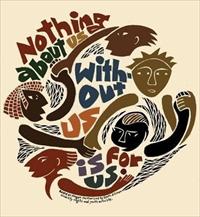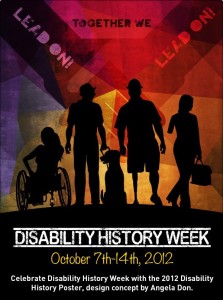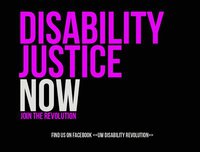Destigmatizing Representation: A Review of “Stigma: An Enigma Demystified” by Lerita M. Coleman Brown
Rachel Cohen-Rottenberg
Union Institute & University
Spring-Summer semester, 2012
In Stigma: An Enigma Demystified, Lerita M. Coleman Brown enters into an exploration of the nature of stigma and the ways in which it operates, both within individuals and in the society at large. As a professor of psychology at Agnes Scott College, Brown specializes in the subjects of stigma and identity, and she uses her expertise to place the process of stigmatization in its social context. Beginning with Erving Goffman’s characterization of stigma as an “undesired differentness” (Goffman 1963, cited in Brown 2010, 179), Brown explains stigmatization with reference to three mutually reinforcing processes:
1) An “affective” process, in which fear becomes attached to difference (Brown 2010, 182-183)
2) A “cognitive” process, in which the mind’s ability to socially categorize other people devolves into degrading stereotypes that blot out individual characteristics and devalue members of a group as inferior to others (Brown 2010, 183-185)
3) A “behavioral” process, in which people use stigma to rationalize exploitation and exclusion, and to maintain majority-minority power relationships (Brown 2010, 185-187)
While Brown does not focus solely on disability, her analysis provides a number of useful tools — and raises a number of challenging questions — for those of us engaged in the project of attempting to destigmatize disability.
Because stigma is based on fear and perpetuated by fear — and because most people fear disability, pain, and illness — attempts to create visual and textual representations that reduce the fear of disability involve significant challenges. However, in approaching such attempts, we can take heart in knowing that fear is not a “natural” response to difference. As Brown notes, young children generally respond to difference with interest, and are only taught fear by their teachers and caregivers through a process called “self-referencing” — described by Brown as “the use of another’s interpretation of a situation to form one’s own understanding of it.” (Brown 2010, 182) In other words, children learn how to respond to difference by noting the responses of those around them. A similar process happens, throughout the lifespan, in the presence of authority figures; many people look to others to see how they should respond (Brown 2010, 182-183). These experiences can be quite powerful, and they have the potential to create deeply stigmatizing responses. For example, a parent who responds to a child’s healthy interest in a person using a wheelchair by pulling the child away creates fear and discomfort about difference.
Given that our earliest response to difference is interest, we might consider using representation to interrupt the fear reaction and bring people to see difference as interesting, positive, and a sign of diversity. In other words, we might use disability representation in order to move people back into an earlier state of response — into a genuine interest in physical differences and the ways in which people navigate with them. After all, representations are a powerful form of self-referencing, for good or for ill, and can create positive valences in addition to negative ones; people get a great deal of their information about how to look at others through print and visual images. As Bernice Pescosolido and her colleagues note regarding the impact of popular media on the stigma attached to mental illness, “information about mental illness learned from a lifetime of media use will be a source of stereotypes, impacting judgments people make in their everyday life when they encounter situations related to mental illness, mental health care, or persons with mental illness.” (Pescosolido et al. 2008, 435) So, if we can change depictions of disability from vehicles of judgment to vehicles of respectful interest in how other people live, we might be able to reinforce positive attitudes and disempower stigmatizing ones.
Even if we can counter stigma with positive disability representation, however, doing so will not erase the fact that many nonstigmatized people will resist letting go of their stigmatized perceptions of others for fear that they themselves might become stigmatized. As Brown notes, anyone can become stigmatized at any time, because a stigma is an index of how far one deviates from the normative social categories created by those in the majority (Brown 2010, 180). Given that social norms can change from culture to culture, from one historical period to another, and from one situation to another, anyone can be stigmatized given a changed set of circumstances (Brown 2010, 180). Thus, the fear of being stigmatized serves to keep stigma in place: in the logic of stigma, if one group is stigmatized, those in another group are safe, but if a stigma is removed from one group, then it can adhere to others. As Brown observes, “most people want to ensure that they are counted in the nonstigmatized ‘majority.’ This, of course, leads to more stigmatization.” (Brown 2010, 181) Given the influence that the fear of stigma wields over the lives of most people, how does one convince nonstigmatized people to give up the illusion of safety?
One strategy might be to simply confront the fact of stigma — to show what stigma looks like, to hold it up before people’s eyes, to break through the denial and say, “Being stigmatized could happen to any of us.” This kind of work might come from people who acquired a disability identity later in life, and who have become conscious of the shift from a nonstigmatized to a stigmatized identity. I am one such person — among many, many others — who can attest to the sudden and disorienting impact of stigma. When I was diagnosed with Asperger’s Syndrome in November of 2008, I quickly became aware that I had moved from a nonstigmatized class to a stigmatized one. I was no different in the minute after my diagnosis than I had been the minute before, of course, and yet, my sense of the way in which the world saw me had changed completely.
Consider, for example, my sense of my own abilities: As a child, I learned to read very early, teaching myself to read at the age of three, and in adulthood, I became a professional writer. From my childhood onward, many people gave me praise for my gifts with written language. I had always considered these gifts core to my identity and to my sense of my self-esteem. Imagine my surprise, then, to find that after my diagnosis, such gifts were dismissed as “splinter skills,” a form of overcompensation for my challenges with verbal speech and auditory processing, and indications of my non-normality. It took me some time to recover from the language of deficit and to assert my gifts as gifts, but I am always aware that the stigma remains in the eyes of others. So, as a person who has been fortunate in having a successful professional life and became stigmatized despite it, I can attest to the absurdity of the common misconception that, as Robert Murphy so sarcastically put it about disability in general, “Such things are only supposed to happen to life’s losers.” (Murphy 1990, 126) Like most privileged people, I had labored for most of my life under the illusion that I could escape stigma. My experience has taught me otherwise.
One of the most powerful ways, then, to confront the fact of stigma is for disabled people to take control of our representations, and to speak the truth of our own experiences. But who should be our primary audience? Should we try to change hearts and minds among able-bodied people, or should we begin by addressing other disabled people and attempting to root out stigma in our own thinking? This question is crucial because, as Brown observes, one of the primary dangers of stigmatization is the way in which stigmatized people begin to view themselves through a distorted lens:
The most pernicious consequence of bearing a stigma is that stigmatized people may develop the same perceptual problems that nonstigmatized people have. They begin to see themselves and their lives through the stigma, or as Sartre (1948) writes about the Jews, they “allow themselves to be poisoned by the stereotype and live in fear that they will correspond to it” (p. 95). (Brown 2010, 186-187)
Given the destructive impact of stigma on self-identity, it seems that one course is to concentrate on using disability representation to counter the impact of stigma on disabled people. In our representations, we might foreground the truth that, as Brown points out, stigma does not originate within individuals, but within social contexts, and that we can struggle to change the norms governing those contexts, much in the way that Rosa Parks helped to change the stigma that African-Americans were worthy to sit only in the back of the bus (Brown 2010, 180).
This kind of work is already being done by a great number of disabled people, including those involved in the project Envisioning New Meanings of Disability and Difference, which showcases the self-representation of disabled artists. In a particularly powerful piece, Jes Sachse, a woman with Freeman-Sheldon Syndrome, poses nude and invites the viewer to self-identify — to share both her fear of exposing her disabled body and her love for herself. “I want you to be scared,” she says. “I want you to look at these photos and see you, and I want you to imagine loving it all.” (Envisioning 2012) These kinds of representations are particularly important to disabled people because, as Brown points out, one of the ways in which society enforces stigma is through “social isolation and lowered expectations.” (Brown 2010, 186) How are we to break through this isolation and see the possibilities for our lives if not by representing the truths of our lives to one another?
When all is said and done, changing the ways in which we represent disability may help to destigmatize disability to some degree, but it will not erase the problem of stigma altogether. Brown’s piece raises a number of unanswered questions about the origins of stigma: Why do people feel the need to feel superior to others? Why do people attach a negative valence to difference? Why do people need to rationalize exclusion and injustice with recourse to stigma? (Brown 2010, 189-191) Until we begin to explore these questions, changing disability representations will create improvement, but will not afford us a long-term solution. As Susan Wendell writes about the knowledge that comes with the disability experience, “I suspect that any culture that stigmatizes and fears disability would rather ignore and suppress that knowledge than make the changes necessary to absorb it. It may have to be cultivated separately until non-disabled society is transformed enough to receive and integrate it. “ (Wendell 1996, 75) Until that time comes, I hope that we, as disabled people, will keeping finding the courage to speak to one another about the truth of our experiences in all of their manifestations.
References
Brown, Lerita M. Coleman. “Stigma: An Enigma Demystified.” In The Disability Studies Reader, edited by Lennard J. Davis, 179-192. New York, NY: Routledge, 2010.
Envisioning New Meanings of Disability and Difference. http://www.envisioningnewmeanings.ca/. Accessed June 15, 2012.
Murphy, Robert Francis. The Body Silent. New York, NY: W.W. Norton & Company, Inc., 1990.
Pescosolido, Bernice A., Jack K. Martin, Annie Lang, and Sigrun Olafsdottir. “Rethinking theoretical approaches to stigma: A Framework Integrating Normative Influences on Stigma (FINIS).” Social Science & Medicine 67, no. 3 (2008): 431-440. doi: 10.1016/j.socscimed.2008.03.018.
Wendell, Susan. The Rejected Body: Feminist Philosophical Reflections on Disability. New York, NY: Routledge, 1996.
© 2012 by Rachel Cohen-Rottenberg









Lerita Coleman Brown
3/15/2013 | 5:39 pm Permalink
Rachel
Thanks for your lovely reflection and review. I am so happy to see that my article first published in the mid-1980′s continues to be provocative. It really has taken on a life of its own especially in the disability community (BTW-a new edition of the Disability Reader will be out any day now).
Thanks again for keeping this piece alive. I hope it continues to give people pause and to see stigma as the illusion that it is.
Sincerely
Lerita Coleman Brown
Rachel Cohen-Rottenberg
3/15/2013 | 6:08 pm Permalink
Thank you so much for your wonderful message! I’m so glad that you happened upon my article — and even more glad that I happened upon yours!